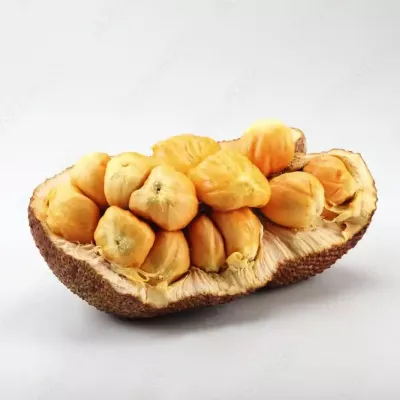



Similar to the Jackfruit, the Cempedak/Chempedak belong to the Artocarpus genus, but differ species wise. It is native to Malaysia and Indonesia. The carpels are sweet, tasty and fragrant.
See more about Cempedak description and plant growing tips.

Pay using UPI, Card or Netbanking

Shipping within 3 working days
The Cempedak is native to Indonesia and Malaysia and is closely related to the jackfruit. It is a tropical fruit that grows best in direct sunlight. It is an exotic fruit often only found in specialty markets, but it is becoming more available in India.
It requires fertile, well-drained soil. It is not drought-tolerant and can withstand temporary waterlogged conditions.
After the initial care, the Cempedak grows fast and without much care. Seedlings bear fruit in 3-5 years, whereas grafted plants bear fruit in 2–3 years.
Though not very common, Cempedak is also grown in large containers.
Cempedak or Chempedak fruit has a flavour reminiscent of strawberries, apricots, and almonds. Its shape is that of a small jackfruit, and it also weighs much less than a jackfruit, typically 1–5 kg. It has a thicker skin than most varieties of jackfruit. It is sweeter than jackfruit, and taste-wise, it is closer to durian than jackfruit.
Cempedak has a meaty texture and can be eaten raw or cooked. It has a nutty flavour that is milder than Durian and can be enjoyed by those who do not favour Durian due to its not-so-likable smell. Roasted seeds are edible.
Data sheet